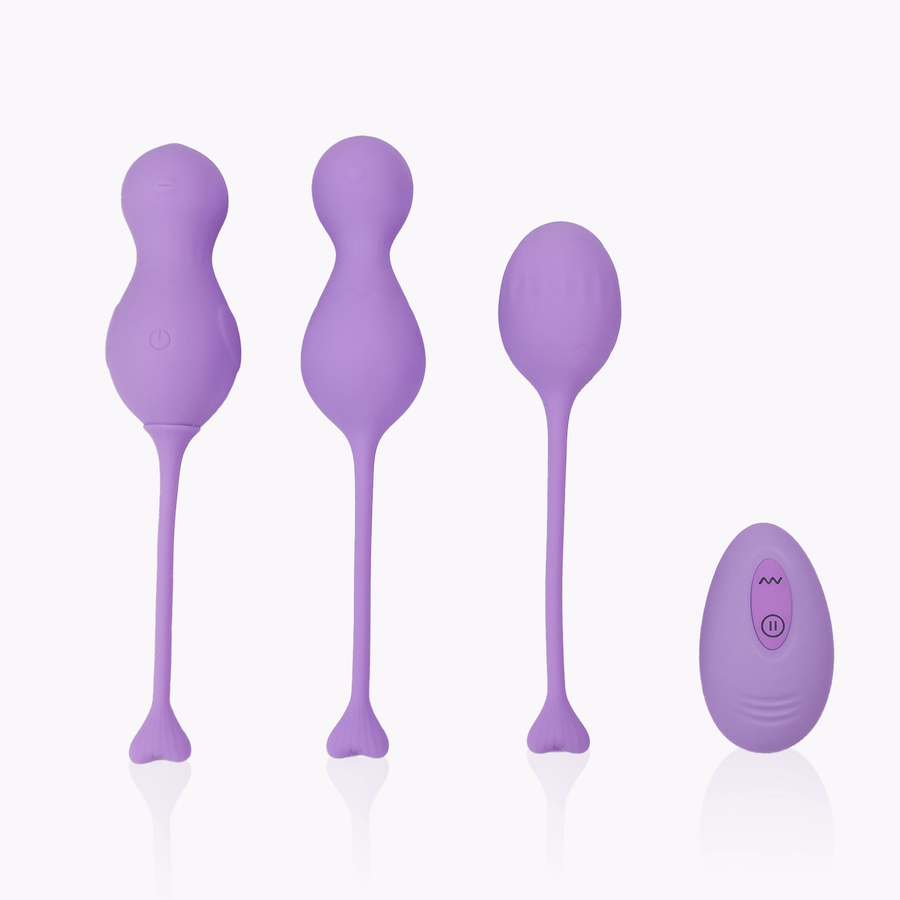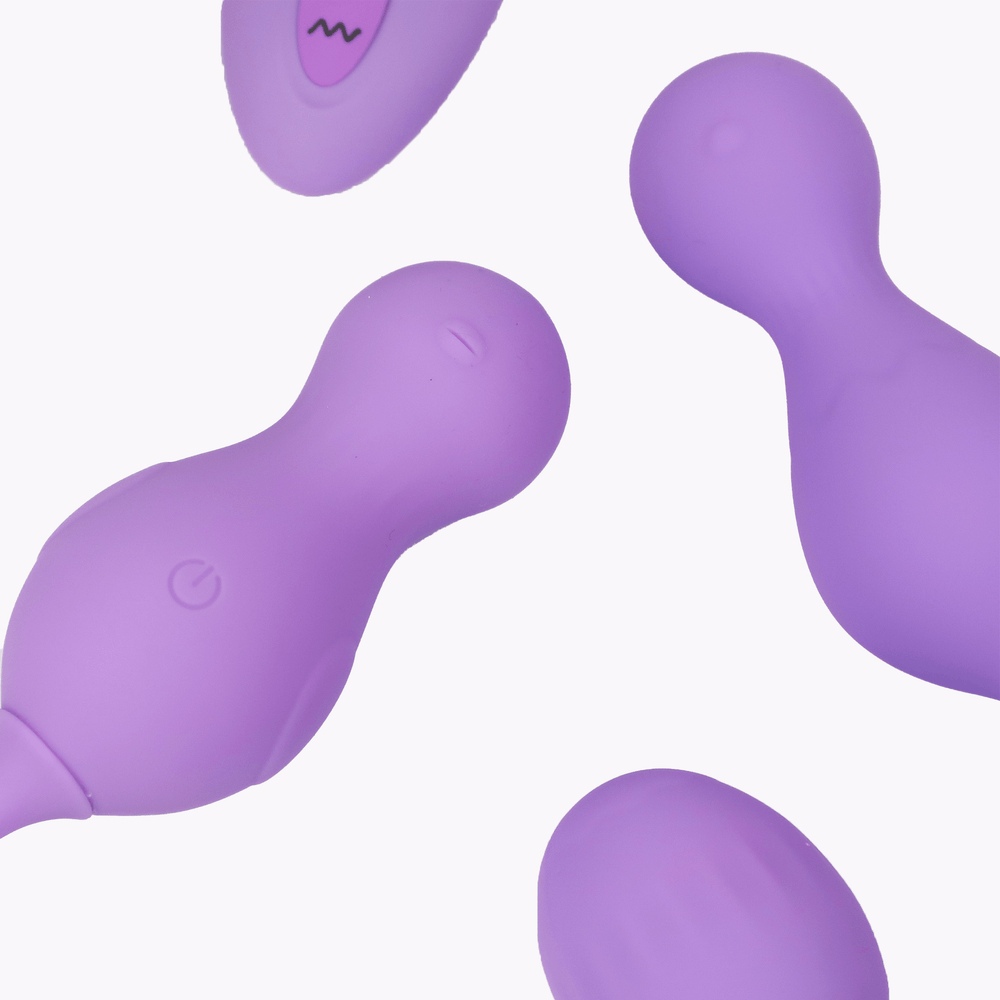Everything You Need to Know About the Female Orgasm
Introduction: Anatomy and Psychology of the Female Orgasm
Female orgasm is a complex and diverse experience, both physiologically and psychologically. Anatomically, the clitoris, vulva, vagina, and pelvic floor muscles all play important roles in this experience. The clitoris is enriched with thousands of nerve endings and is a critical area for sexual arousal. Vaginal orgasms are associated with rhythmic contractions of the G-spot and pelvic floor muscles on the inside of the vagina.
Psychologically, female orgasm involves much more than just a physical response. Emotional connection, self-confidence, comfort, and sexual identity can profoundly influence a woman's orgasm experience. In particular, factors such as stress, anxiety and communication with the partner are important factors that determine the quality of this experience.
Research shows that female orgasm is more than just a sexual experience, it also has positive effects on overall health and well-being. Orgasm can help reduce stress, strengthen emotional bonds, and even act as a pain reliever.
This complexity and diversity of the female orgasm has been a constant subject of research in the field of sexual health and well-being. Scientific studies on this subject contribute to a better understanding of female sexuality and raising awareness of sexual health issues.
Orgasm Types: Clitoral, Vaginal and Mixed Orgasm
Distinguishing orgasm types has an important place in understanding female sexuality. Three main types of orgasm are generally identified: clitoral, vaginal and mixed.
1. Clitoral Orgasm:
Clitoral orgasm occurs through stimulation of the clitoris. The clitoris is a sensitive organ with thousands of nerve endings and is the main source of sexual arousal for many women. Clitoral orgasm is usually characterized by an intense and direct feeling of pleasure.
2. Vaginal Orgasm:
Vaginal orgasm occurs through stimulation of the G-spot on the inside of the vagina or contraction of the pelvic floor muscles. Some women describe this type of orgasm as deeper and more widespread pleasure.
3. Mixed Orgasm:
A mixed orgasm is an experience that combines both clitoral and vaginal stimulation. This type may involve an intense combination of clitoral and vaginal stimulation, either simultaneously or sequentially.
This diversity of the female orgasm highlights the personal and unique nature of the sexual experience. Every woman may experience different types of orgasms or find some types more intense than others. The important thing is for each individual to explore their own sexual preferences and comfort levels.
Research on sexual health and orgasm is constantly expanding our knowledge and understanding of the subject. These studies can help women better understand their sexual lives and maximize their pleasure.
Common Myths and Facts about Female Sexuality
Female sexuality can be an area full of misconceptions and myths. This section aims to debunk these myths and reveal the facts.
Myth #1: Women Should Always Reach Orgasm
Fact: Women should not be expected to orgasm with every sexual experience. Orgasm can vary depending on many factors, and this is normal.
Myth 2: Real Orgasm Only Happens Vaginally
Fact: Clitoral orgasm is the most common type of orgasm for women. Vaginal orgasm is also possible, but every woman is different and can experience all types of pleasure.
Myth 3: Women Don't Enjoy Sex As Much As Men
Fact: Women can fully enjoy sex, and it depends on personal experience. Sexual pleasure does not differ between men and women.
Myth 4: Women's Sexual Desire Decreases as They Age
Fact: There is no direct connection between aging and sexual desire. In fact, some women may feel greater sexual satisfaction and comfort as they get older.
Myth 5: Sexual Problems Are Only Physical Problems, Not Psychological
Fact: Sexual problems can be caused by both physical and psychological factors. Emotional state, sexual history and relationships can have a huge impact on the sexual experience.
These myths must be debunked to help dispel misconceptions about female sexuality and promote women's sexual health and happiness.
Difficulties and Solutions in Reaching Orgasm
Female orgasm is a complex and individual process. For some women, reaching orgasm can be challenging. There may be many reasons for this situation and solutions vary depending on these reasons.
Physical Factors:
Hormonal Changes: Hormonal changes, such as menopause or birth control pills, can have an impact on sexual desire and orgasm.
Health Conditions: Some health conditions and medications can have an impact on sexual function.
Solution: In this case, it is important to consult a healthcare professional. Regulating hormonal balances or alternative medications may improve the condition.
Psychological Factors:
Stress and Anxiety: Stress and anxiety can negatively affect sexual desire and orgasm.
Sexual History: Traumatic sexual experiences or lack of training can lead to orgasm difficulties.
Solution: Working with a professional therapist, stress management techniques, and sexual therapy can help.
Relationship Dynamics:
Lack of Communication with Partner: Not communicating clearly about sexual needs and expectations can make it difficult to reach orgasm.
Solution: It is important to have an honest and open dialogue with the partner and share sexual preferences and desires.
Self Discovery:
Masturbation and Sexual Exploration: Getting to know your own body and understanding what feels good can help you reach orgasm.
Solution: Discovering your own sexual preferences and comfort zone is an important step in understanding and achieving orgasm.
Every woman's sexual experience is unique, and difficulties reaching orgasm are normal. These difficulties can be addressed through various solutions and every woman can discover her own sexual happiness.
Sexual Communication: Talking to Your Partner About Orgasm
A healthy sexual relationship starts with open and honest communication. Orgasm can often be a sensitive topic, but establishing a healthy dialogue between partners about it can increase both sexual satisfaction and the overall quality of the relationship.
Importance of Communication:
Talking about sexual preferences, expectations, and boundaries increases mutual understanding and satisfaction. Talking about orgasm with your partner can make your sexual intercourse more satisfying.
Establishing Emotional Trust:
Communication plays a fundamental role in establishing emotional trust. Openly expressing your feelings and needs to your partner provides greater intimacy and understanding in your sexual relationship.
Practical Tips:
Choose the Right Time: It is important to choose a suitable time for sexual conversations. This is a time when both parties feel comfortable, usually in a relaxed and private environment.
Be Positive and Open: Use positive language in your communication and clearly express what you want and what you feel.
Listen and Understand: Listening to your partner's opinions and feelings also encourages mutual understanding and respect.
Self-Discovery: Masturbation and Orgasm
Self-discovery is of great importance to understand and experience the female orgasm. Masturbation is an essential part of this journey of discovery and helps women understand their own sexual preferences, desires and paths to orgasm.
Importance of Masturbation:
Exploring your own body is the most direct way to understand your sexual desires and ways of reaching orgasm. Masturbation offers the opportunity to get to know your sexual responses and improve your sexual health.
Understanding Your Own Sexual Responses:
During masturbation, you can discover which touches, speed and rhythm give you the most pleasure. This can also guide you in your sexual relations with your partner.
Exploring Different Ways to Orgasm:
Masturbation allows you to experience different types of orgasms, such as clitoral or vaginal orgasm. Every woman's path to orgasm is different, and exploring these paths can increase your sexual satisfaction.
Self-Confidence and Comfort:
Exploring your own sexuality increases your sexual confidence and comfort. By knowing yourself better, you can be more comfortable and open in sexual relationships.
Research and Expert Opinions:
The positive effects of masturbation on sexual health are supported by many studies and sexual health experts.
Exploring your own sexual self is a critical step in understanding orgasm and increasing your sexual happiness. Masturbation is a powerful and important tool in this journey.
Orgasm and Health: Physical and Mental Benefits
Orgasm is not only a sexual peak, but also a phenomenon that has many positive effects on our physical and mental health. The health benefits of female orgasm are supported by various studies.
Physical Benefits:
Pain Relief: Natural painkillers such as endorphins and oxytocin are released during orgasm. This can provide temporary relief from menstrual cramps, headaches, and even chronic pain.
Immune System Strengthening: Regular sexual activity and orgasm can strengthen the immune system and make the body more resistant to diseases.
Cardiovascular Health: Orgasm may improve heart health and lower blood pressure.
Mental and Emotional Benefits:
Stress Reduction: Orgasm releases endorphins and oxytocin, which lower stress levels and give a feeling of relaxation. This can improve overall mood and reduce anxiety.
Sleep Quality: Orgasm can contribute to better sleep quality by creating a relaxing effect.
Self-Confidence and Body Image: Exploring your own sexual responses and experiencing orgasm can positively impact your self-confidence and body image.
Importance of Research:
Scientific research on female orgasm and its effects on health emphasizes the importance of this issue and raises greater awareness.
Female orgasm is an experience with both physical and psychological aspects that contribute to the healthy functioning of our body and mind. Understanding and experiencing these benefits is one way to improve our sexual health and overall well-being.
Conclusion: The Importance and Strengthening of the Female Orgasm
As we've discussed throughout this blog, female orgasm is not just one aspect of sexual satisfaction, but also an important component of physical and mental health. The importance of orgasm for women is directly related to personal health and happiness.
Importance of Female Orgasm:
Female orgasm has a critical role in self-discovery, sexual expression, and deep connections with partners. This can have profound effects on sexual health and overall quality of life.
Ways to Strengthen:
Sexual education and open communication are important steps to understanding and experiencing orgasm. Understanding and expressing your own sexual desires and needs can increase sexual satisfaction and health.
Masturbation and sexual exploration are important tools for women to understand their sexual response and orgasm. This can enrich sexual experiences both individually and with a partner.
Working with health professionals and therapists can help overcome difficulties reaching orgasm.
As a result, understanding and supporting female orgasm on both an individual and relationship basis opens the door to a healthier, happier and more satisfying sexual life. Research and education on this subject can help women strengthen their sexual health and well-being.
Source and References
Komisaruk, B. R., Beyer-Flores, C., & Whipple, B. (2006). The Science of Orgasm. Johns Hopkins University Press.
Lloyd, E. A. (2005). The Case of the Female Orgasm: Bias in the Science of Evolution. Harvard University Press.
Chalker, R. (2000). The Clitoral Truth: The Secret World at Your Fingertips. Seven Stories Press.
Chivers, M. L., & Rosen, R. C. (2010). "Sexual Arousal Patterns of Women with a History of Orgasmic Dysfunction". Journal of Sex & Marital Therapy.
Basson, R. (2000). "The Female Sexual Response: A Different Model". Journal of Sex & Marital Therapy.
Tiefer, L. (2006). "Sex is Not a Natural Act and Other Essays". Westview Press
Whipple, B., & Perry, J. D. (1981). "A Comparison of Mechanical and Human Stimulation in Inducing Female Orgasm". The Journal of Sex Research.
Prause, N., & Pfaus, J. (2012). "Vaginal vs. Clitoral Stimulation and Female Orgasm: A Review". Journal of Sexual Medicine.














Leave a comment